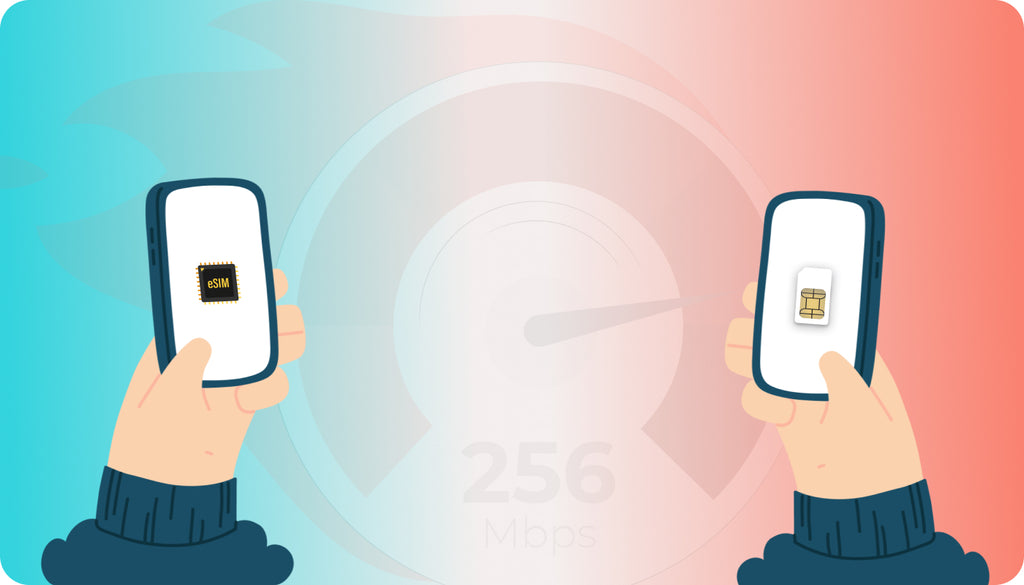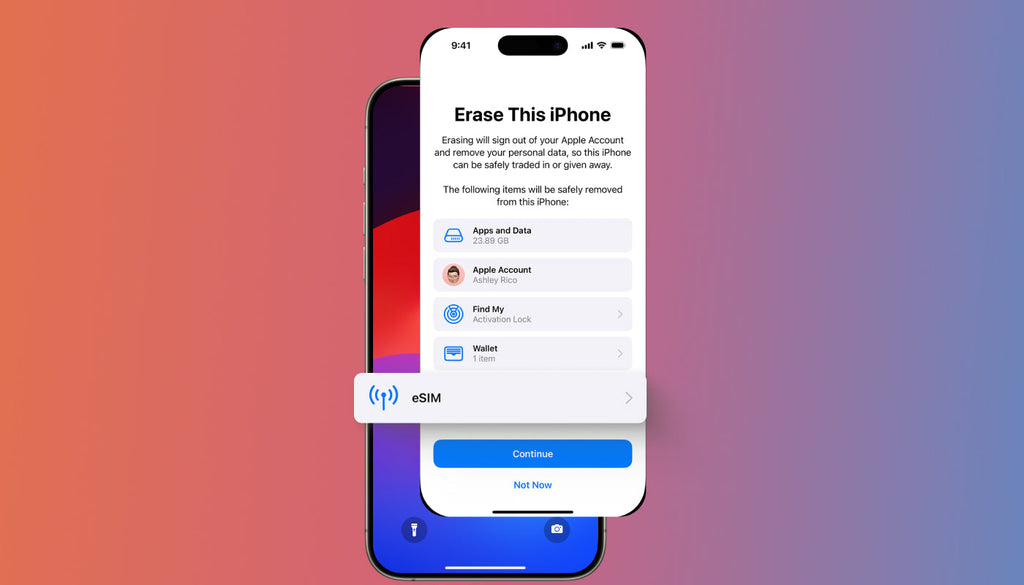Mythbusters: Physical SIM vs eSIM Connectivity Speed Debate
The debate between Physical SIM vs eSIM connectivity speed is a hot topic. While traditional SIM cards have long been the norm, eSIMs are gaining traction for their convenience. Are you wondering which offers faster internet speeds? Which is better - eSIM or physical SIM - for data and Internet connectivity?
Difference Between a SIM Card and eSIM
Before we get into the speed comparison, let's quickly grasp the concept of eSIM and physical SIM cards:
- A SIM card is a traditional physical card used in phones for network connection, available in standard, micro, and nano sizes.
- On the other hand, an eSIM, also known as an embedded SIM, is a digital SIM card that is directly integrated into your mobile device. eSIMs provide several benefits compared to traditional SIM cards:
- Convenience: eSIMs can be remotely activated and provisioned without the necessity of physically swapping SIM cards.
- Flexibility: They can be utilized with multiple mobile operators, allowing you to have greater flexibility in selecting the most suitable plan for your requirements.
- Security: eSIMs offer enhanced security compared to traditional SIM cards since they cannot be easily removed or lost.
Now let's compare eSIM and physical SIM:
- Physical SIM needs insertion for network connection; whereas eSIM comes pre-embedded.
- Switching carriers is easy with both types of cards; yet activating an eSIM depends on network support.
- Physical SIMs can be lost while eSIMs are less susceptible to damage.
- eSIM activation is limited to newer models compared to physical SIMs that work on all unlocked devices.
- If misplaced, an activated eSIM can still be located unlike a misplaced physical sim card
- Regarding performance speeds - both offer equal speeds based on network coverage.
Does eSIM Work Better Than Physical SIM?
Beyond speed, various performance aspects distinguish eSIM from physical SIM cards. At Keepgo, we provide physical SIM cards along with a wide choice of eSIM bundles, letting you pick the one that matches your connectivity needs the most. Although we adjusted our products to deliver the same level of usability and safety, there are some differences that shed light on which option could be a better choice for you. Let’s compare!
|
Feature |
eSIM |
Physical SIM |
|
Setup |
Installs upon scanning a QR code |
Should be physically inserted into device |
|
Robustness |
Resilient to physical damage |
Susceptible to damage or loss |
|
Compatibility |
Limited to newer device models |
Compatible with a wide range of devices |
|
Storage Space |
Embedded, occupies no physical space |
Relies on physical slot within the device |
|
Security |
Inbuilt security features |
Vulnerable to physical tampering |
|
Global Roaming |
Supported |
Supported |
|
Environmental Impact |
Reduces dependence on plastic cards |
Physical production and waste |
eSIM vs Physical SIM Data and Internet Speeds
When comparing eSIM vs physical SIM data and internet speeds, it's essential to understand that both types of SIM cards do not inherently dictate the speed of your mobile connectivity. Factors such as network traffic, congestion, and the distance between your device and the carrier cell tower significantly influence internet speed.
At Keepgo, we have taken care of providing you with fast connectivity regardless of whether you choose a SIM card or an eSIM. We have taken care of low latency and different breakout locations, ensuring you can always enjoy a positive user experience (UX).
You can experience 4G/LTE speeds on Keepgo-supported networks worldwide. Some eSIM bundles also offer 5G speeds in certain locations. However, actual speeds may vary based on different factors:
- Location. The proximity to cell towers and the overall network infrastructure significantly impacts speed. Urban areas usually have faster speeds compared to rural locations.
- Device. Older devices may not achieve the maximum eSIM speeds. Ensure your device supports the latest technologies.
- Weather. Extreme weather conditions like heavy rain or snowfall can temporarily affect signal strength and speed.
Keepgo offers physical SIM cards and eSIMs that provide complete control over the connectivity services you utilize. Our products are compatible with multiple operators in all the countries we serve. Once installed on your device, our SIM cards and eSIM bundles enable you to manually select the network for connection. Access our detailed guide for step-by-step instructions on how to manually switch networks in your phone settings and check connectivity speeds.
Is It Better to Use eSIM or Physical SIM Card for Higher Speeds?
Let’s wrap up. Which is better - eSIM or physical SIM for faster connectivity speeds?
When it comes to speed, eSIM and physical SIM cards are generally comparable. Both technologies access the same mobile networks, so their performance mainly depends on external factors. Under the same conditions, using an eSIM will not necessarily result in faster connectivity compared to a physical SIM. On the other hand, it won't lead to slower network speeds either.
If you find that your eSIM is providing slower connectivity than a physical SIM card, it might not be due to using an eSIM itself but rather could be related to network issues or improper setup of your eSIM settings such as APN configuration.




